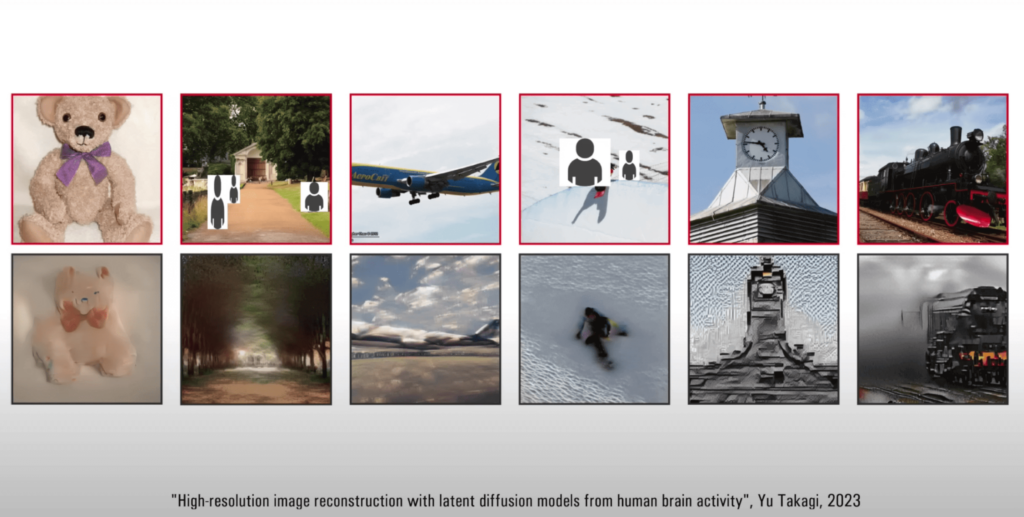Did you know that AI can read your mind?
In this post, I will discuss a new paper where researchers use stable diffusion to read the mind and reconstruct images based on brain activity.
This is an exciting development, as AI has been used to decode the brain before stable diffusion, but now we can take it to a whole new level with stable diffusion.
Stable diffusion is a so-called generative AI; it’s open source and can generate stunning images based on text prompts.
In this paper, the researchers trained stable diffusion on thousands of brain scans. To do so, they showed thousands of images to humans while using memorize cam to lock their brain activity.

During the training process, the stable diffusion model learned to associate the patterns of brain activity with the corresponding images that were shown to the participants.
By analyzing the brain scans and the images presented, the model could identify the unique brain activity patterns corresponding to specific objects, people, or scenes. This process allowed the algorithm to generate images similar to those shown to the participants based solely on their brain activity patterns.

The images shown to human participants are above and below are other images reconstructed by the algorithm based on their brain activity.
While the algorithm can reconstruct images based on brain activity, it is clear that is still imprecise. A notable example is the image below, where the algorithm could not recognize the clock tower and produced an abstract image instead. Still we have to consider that this technology it’s just in the beginning and there will be continuous improvements.

In conclusion, the use of stable diffusion models in combination with brain scan data represents a significant advancement in AI research.
With the ability to reconstruct images based on brain activity, this technology has opened the door to various potential applications, for neuroscience research and business.
While there are still some limitations to the technology, such as the need for a larger dataset of brain scans to improve accuracy, the potential for further developments in this field is immense.
As AI progresses, it will be interesting to see how this technology can be applied to understand the human brain better and improve our overall understanding of the world around us and our minds.





